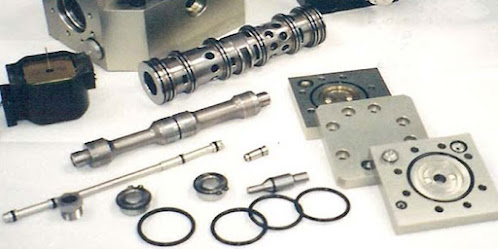 |
| Electro-Hydraulic Servo Valve |
An Electro-Hydraulic Servo Valve is a device that controls position, velocity, pressure, or force in a machine or device by metering the flow of oil in response to an electrical input signal or command (usually through a piston or cylinder).
A servo valve is a valve that receives pressurized hydraulic fluid from a source, usually a hydraulic pump.
The fluid is subsequently sent to a hydraulic cylinder in a precise and controlled manner.
In most cases, the valve will move the spool proportionally to an electrical signal it receives, allowing it to control flow rate indirectly.
An electro-hydraulic servo valve (EHSV) is an electronically controlled valve that regulates the flow of hydraulic fluid to an actuator.
Servo valves are frequently employed to control large hydraulic cylinders with a little electrical signal.
With appropriate post-movement damping qualities, servo valves can enable accurate control of position, velocity, pressure, and force.
During World War II, the electrohydraulic servo valve made its debut.
Due to the difficulty to quickly transform electrical impulses into hydraulic flows, EHSVs in use throughout the 1940s were characterized by poor precision and lengthy response times.
A solenoid was utilized to operate a first-stage spool, which then drove a revolving main stage in the initial two-stage servo valve.
This was comparable to the servo valves used during World War II, which used a solenoid to drive a spool valve.
One or more steps can be found in electrohydraulic servo valves.
A torque motor is used to directly position a spool valve in a single-stage servo valve.
Because of the torque motor power needs, single-stage servo valves have limited flow capabilities and stability.
Flapper, jet pipe, or deflector jet valves can be used as hydraulic amplifier first stages in two-stage servo valves to position a second-stage spool valve.
This design improves the servo valve's flow capabilities, stability, and force output significantly.
Three-stage servo valves, on the other hand, might use an intermediate stage spool valve to position a bigger third stage spool valve.
Three-stage servo valves can only be used at very high speeds.
Furthermore, the type of feedback employed for the second stage of two-stage servo valves can be classed as spool position, load pressure, or load flow feedback.
Position feedback is the most common type of feedback used in two-stage servo valves, which can also be characterized as direct feedback, force feedback, or spring centering.
Comments
Post a Comment